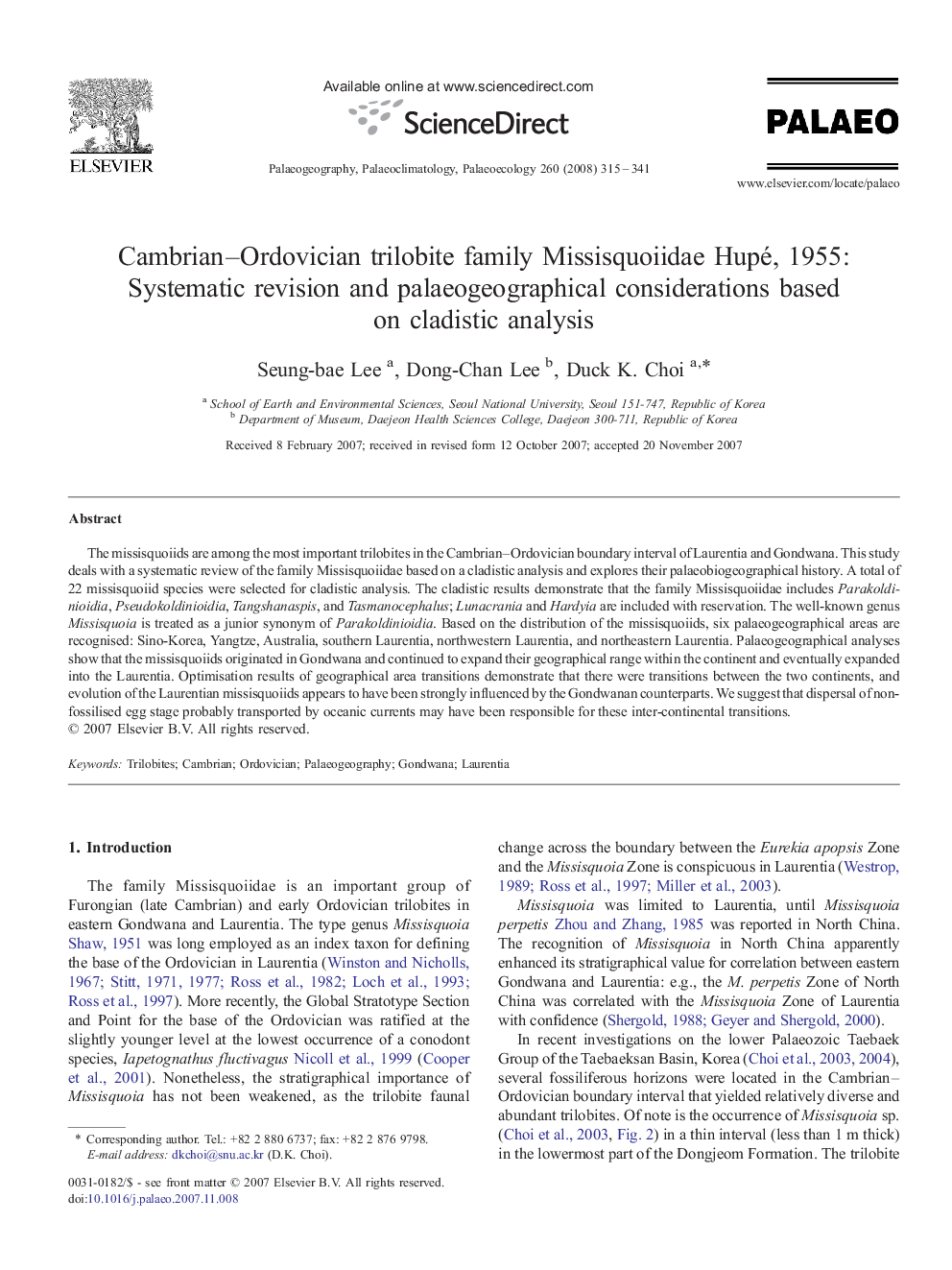| Article ID | Journal | Published Year | Pages | File Type |
|---|---|---|---|---|
| 4468555 | Palaeogeography, Palaeoclimatology, Palaeoecology | 2008 | 27 Pages |
The missisquoiids are among the most important trilobites in the Cambrian–Ordovician boundary interval of Laurentia and Gondwana. This study deals with a systematic review of the family Missisquoiidae based on a cladistic analysis and explores their palaeobiogeographical history. A total of 22 missisquoiid species were selected for cladistic analysis. The cladistic results demonstrate that the family Missisquoiidae includes Parakoldinioidia, Pseudokoldinioidia, Tangshanaspis, and Tasmanocephalus; Lunacrania and Hardyia are included with reservation. The well-known genus Missisquoia is treated as a junior synonym of Parakoldinioidia. Based on the distribution of the missisquoiids, six palaeogeographical areas are recognised: Sino-Korea, Yangtze, Australia, southern Laurentia, northwestern Laurentia, and northeastern Laurentia. Palaeogeographical analyses show that the missisquoiids originated in Gondwana and continued to expand their geographical range within the continent and eventually expanded into the Laurentia. Optimisation results of geographical area transitions demonstrate that there were transitions between the two continents, and evolution of the Laurentian missisquoiids appears to have been strongly influenced by the Gondwanan counterparts. We suggest that dispersal of non-fossilised egg stage probably transported by oceanic currents may have been responsible for these inter-continental transitions.
